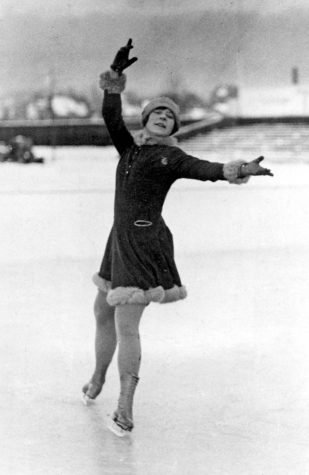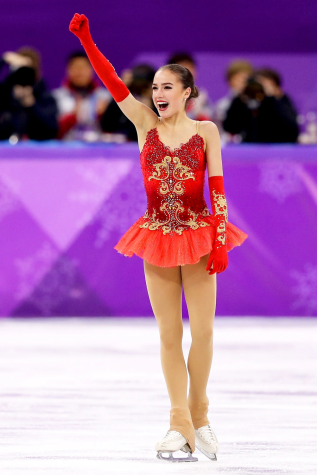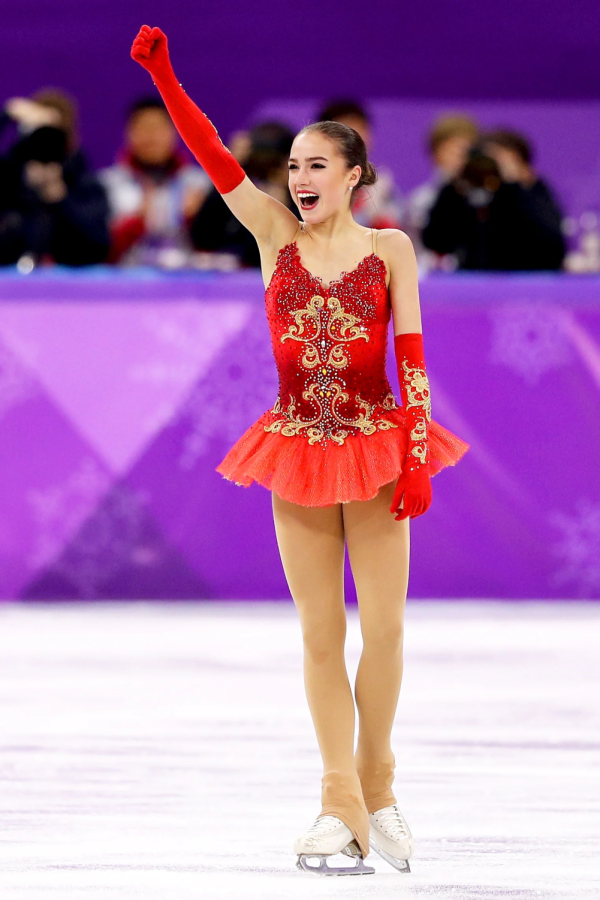Olympic style development
February 7, 2022
Since 1924, the design of uniforms worn by Olympians have changed for several reasons. Depending on the event and location of the games, uniforms focus on style, safety and practicality. And as the games adapted so did the outfits.
In the first 1924 winter games bobsledders wore bulky sweaters and leggings, these heavier and bulkier whereas today we see them wearing a much more sleek bodysuit designed for style and aerodynamics. Similarly, figure skating has arguably had the most change in what they wear. Sweaters were popular and women often wore skirts. Current uniforms have been designed to mesh performance with style to catch the attention of the audience. When the sport moved indoors, the costumes became more elegant and could be tailored for a more functional use. Many attribute the modern era of figure skating to Peggy Fleming, who skated in the 1968 Grenoble Olympics as she wore a bright green and yellow outfit.
“Pretty and balletic, elegant and stylish, Fleming took a staid sport…and made it marvelously glamorous,” wrote the Sports Illustrated writer E.M. Swift.
While the Olympic uniforms have progressed for style, changes also had to be made for performance and safety reasons. New precautions have been taken to avoid athletes from being injured. For example, speed skaters started with leggings and sweaters and now USA uniforms are aerodynamic and competitors are required to wear helmets and goggles. The helmet must correspond with international standards and certification.
“The helmet must be well fastened on the head, all the time while being in the race course, in conformity with the safety instructions of the manufacturer,” stated in the World Skate Inline Speed Skating Rulebook for 2021.
Along with skating, hockey teams were not always mandated to wear helmets but now these are required.
Then, starting in 1994 athletes began wearing higher quality uniforms that often displayed sponsors as they drifted away from non-distinct clothing.
Besides athletes’ competition clothing, they also wear an outfit specific to the opening and closing ceremonies.
The closing ceremony outfits for the 2022 winter Olympics were revealed in October 2021 and this years’ design shows the perfect example of outfit evolution.
The Ralph-Lauren uniform has a variety of modern features including “temperature-responsive fabric” that is able to adapt to when temperatures drop by using an extra layer of insulation.
This design was intended to be worn not only to the Olympics but so athletes can wear them after the games.
“It feels like it’s more streetwear and fashionable, and that way it sort of integrates that sporty feel, so it’s definitely something that I would wear afterwards,” said USA hockey player Hilary Knight.


Uniforms symbolize the homeland for each athlete, these can show patriotism and self-expression as designers work to help competitors achieve their best performance.


